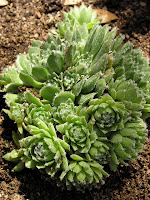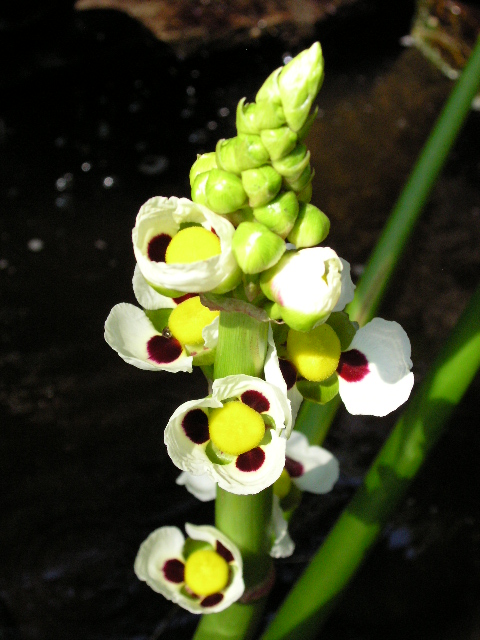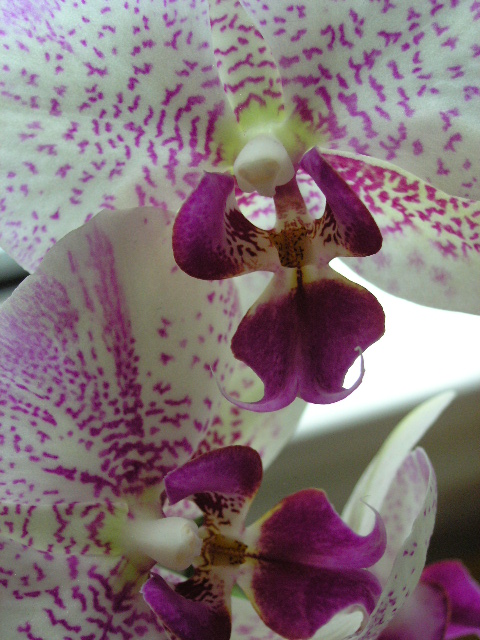The central plant is Aloe brevifolia. I had this Aloe species before, but a plugged drainage hole led me to drowning it. I'm looking forward to trying it again.
Surrounding it is Sedum spurium 'Tricolor'. I really like its variegated foliage combined with pink highlights. It should cascade over the edges as it grows.
- Soft-leafed yucca (Yucca recurvifolia): Added to the rear of the top level of the Three Tiers Garden behind the Cast Iron Plants (Aspidistra elatior).
- Soap Aloe (Aloe maculata): Finally transplanted from the backyard garden to the middle level of the Three Tiers Garden; smaller sprouts added at the base of a Red Oak in the front garden.
- Sempervivum species: Added to the bottom level of the Three Tiers Garden, one between each of the Agave 'Blue Glow'.































